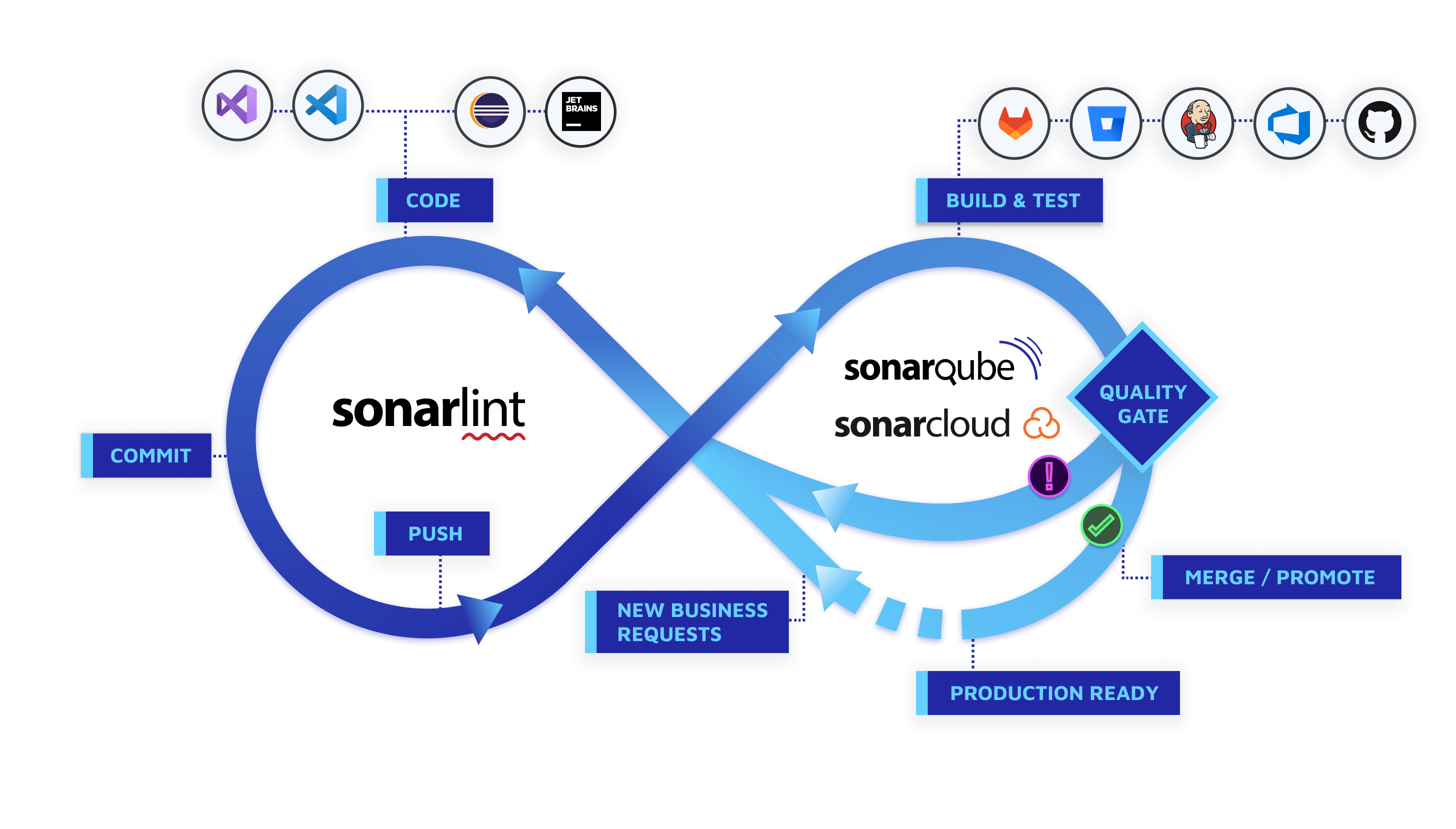How to Choose the Right Tool for Your Code Quality and Security: SonarCloud vs SonarQube
19 Jun 2023
SonarCloud and SonarQube are two products from SonarSource that help developers find and fix issues in their code, such as bugs, vulnerabilities, code smells, duplications, and more
Both products use the same analysis engine and support over 30 languages and frameworks. However, there are some key differences between them that you should consider before choosing one for your project.
SonarCloud is a cloud-based service that integrates with popular cloud platforms like GitHub, Bitbucket, Azure DevOps, GitLab, and Jenkins. You can use SonarCloud to analyze your code in your CI/CD pipelines or directly from your IDE with SonarLint. SonarCloud is updated frequently with new features and improvements, so you always get the latest version of the analysis engine and the user interface. SonarCloud is free for open source projects and has a usage-based pricing model for private projects.
SonarQube is a self-managed solution that you can install on your own servers or in a self-managed cloud environment. You can use SonarQube to analyze your code in your CI/CD pipelines or directly from your IDE with SonarLint. SonarQube offers a free open source version and a yearly subscription for the enterprise version, which includes additional features like branch analysis, portfolio management, security reports, and more. SonarQube has different release cycles depending on the edition: the community edition is released every 2 months, the developer edition every 4 months, and the enterprise and data center editions every 18 months.
The main factors that you should consider when choosing between SonarCloud and SonarQube are:
- Your code hosting platform: If you use a cloud platform like GitHub.com or Bitbucket Cloud, SonarCloud is the easiest option to integrate with your workflows. If you use an on-premise solution like GitHub Enterprise or Bitbucket Server, SonarQube is the best option to integrate with your infrastructure.
- Your security and compliance requirements: If you need to have full control over your data and meet specific security and compliance standards, SonarQube gives you more flexibility and customization options. If you are comfortable with trusting a third-party provider with your data and rely on their security measures, SonarCloud can save you time and resources.
- Your budget and resources: If you have a limited budget or resources to maintain your own servers or databases, SonarCloud can be a cost-effective solution that scales with your needs. If you have enough budget and resources to invest in your own infrastructure and support, SonarQube can give you more stability and performance.
Some of the limitations of SonarCloud are :
- It does not support branch analysis (analysis of non-pull request branches other than the main branch).
- It does not support multiple projects bound to a single repository (the monorepo strategy).
- It does not support many compiled languages (C and Objective-C) or T-SQL and PL/SQL.
- It does not support code coverage information or import of external rule engine reports.
- It has less room for configurability e.g. no 3rd party plugins.
Some of the limitations of SonarQube are:
- It requires more installation and maintenance efforts than SonarCloud.
- It may not have the latest features and improvements as SonarCloud.
- It does not have governance features like those available in the Enterprise Edition of SonarQube unless you purchase a subscription.
- There is no migration path from SonarQube to SonarCloud, or vice versa.
To summarize, SonarCloud and SonarQube are both powerful tools that can help you improve your code quality and security. The best choice for you depends on your specific needs and preferences. You can try both products for free and see which one suits you better.
At Tekcent, we use SonarCloud with our Jenkins CI/CD pipelines because it gives us several benefits such as:
- Quality gates: We can define quality criteria for our code based on metrics like bugs, vulnerabilities, code smells, coverage, duplications, etc. We can then use these quality gates to prevent merging pull requests that do not meet our standards or to trigger alerts when our main branch degrades over time.
- Secure code: We can detect and fix security issues in our code before they become exploitable by attackers. We can also review security hotspots that highlight sensitive code that needs manual verification or sanitization.
- Clean code: We can improve the readability, maintainability, and testability of our code by following best practices and coding standards. We can also reduce technical debt and code complexity by refactoring and removing unnecessary or duplicated code.
If you are interested in deploying SonarCloud or SonarQube within your organization, we can help you with our expertise and experience. Contact us today to find out how we can help you achieve your code quality and security goals.

